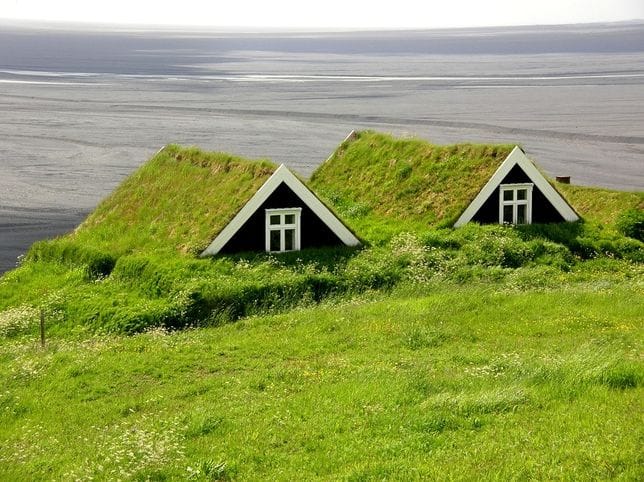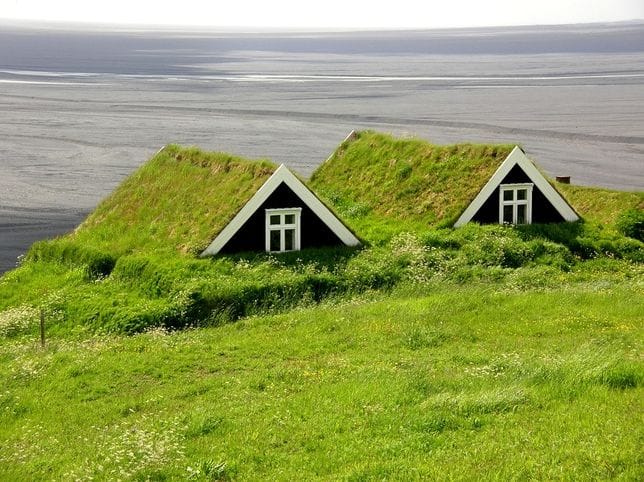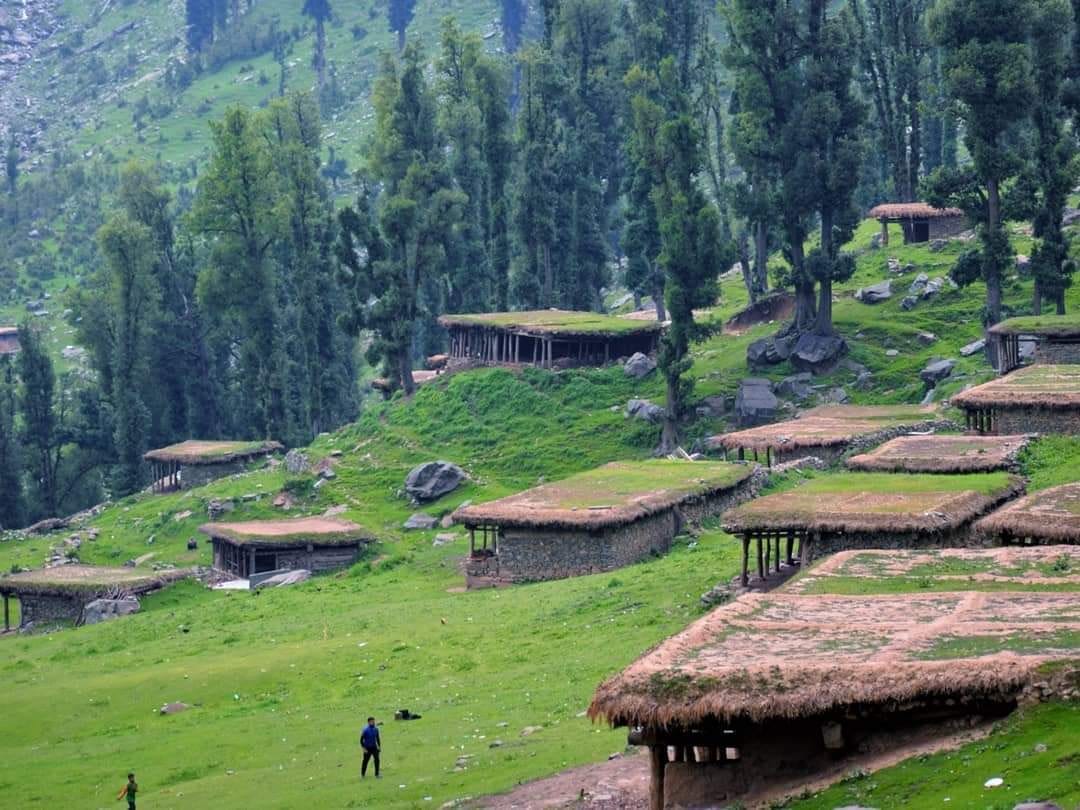- Tiny Farm Friends
- Posts
- Living Roofs — Bringing Life Back to the Top
Living Roofs — Bringing Life Back to the Top
Tiny Insights for building naturally, building beautifully.

No.111 — Read old posts on Tinyfarmlab.com
Reading Time 5 minutes
Imagine rain falling softly on your roof,
not tin,
not tile,
but soil and moss.
The sound absorbed,
not echoed.
The air cooler.
The house breathing.
For centuries,
people have grown life over their shelters,
long before we called them green roofs.
In Scandinavia and Iceland,
homes were built with birch bark,
laid over wooden planks,
and topped with turf.
The thick layer of grass and soil
insulated against freezing winds
and kept interiors snug and silent.
The land protected its people quite literally.

And in the forests of Kashmir,
the Gujjars,
a pastoral community living
between the pine slopes
and alpine meadows,
built homes with the same intelligence.
Their houses were made of hand-hewn deodar logs,
packed with wattle and daub walls,
and roofed with earth and sod.

In spring and summer,
these roofs would come alive,
bursting with green shoots
that blended the house seamlessly into the hillside.
The turf roof wasn’t just beauty,
it was insulation,
camouflage,
and protection.
It kept interiors warm through the snow,
and cool during mountain summers.
Even rain sounded softer on these roofs,
filtered through soil instead of tin.
Today, living roofs are no longer a novelty.
They’re a quiet rebellion against the concrete heat.
We built a living roof over a reciframe roof,
for the tiny farm fort.
It makes the building look like
it has grown from the land.
Why Build a Living Roof?
Ecological benefits
Absorbs rainwater and reduces runoff.
Cools the microclimate and cuts down the heat island effect.
Provides habitat for birds, bees, and insects.
Thermal & acoustic benefits
Keeps homes cooler in summer and warmer in winter.
Reduces noise and echoes
Emotional & aesthetic benefits
Softens the boundary between home and earth.
Replaces what was taken from the soil.
Makes your home look like it belongs to its landscape.
The Anatomy of a Living Roof
A living roof is a layered system that mimics a small ecosystem.
Each layer plays a role, like soil strata under our feet.
Structural Deck:
strong base, timber, bamboo, or vault.Cardboard or sheets:
saves the membrane from any nails.Waterproofing Layer:
modern EPDM membranes or HDPE 500 gsm.Root Barrier:
geotextile or root-resistant sheet to prevent damage.Drainage Layer:
gravel, pumice, or plastic drain mats to let water escape.Filter Fabric:
prevents soil from clogging the drains.Soil Layer:
a light mix of soil, compost, and sand, depth 7–30 cm.Plants:
native grasses, mosses, herbs, or even vegetables.
Each layer makes sure your roof holds life,
not moisture.
The Challenges
It’s not all romantic, a living roof demands care.
Weight:
wet soil can add 60–150 kg/m²,
your roof must handle it.Waterproofing:
the single most critical layer,
although repairable like punctures,
leaks are unforgiving.Maintenance:
occasional weeding,
replanting, and irrigation.Cost:
slightly higher initial investment,
but long-term savings in insulation.
If you’re dreaming of one over a cob or earthen home, keep these in mind:
Keep the slope gentle (under 15°).
Strengthen walls and roof to carry the load.
Add drip edges and proper rain outlets.
Use local soil, lighter, better adapted.
Choose native plants that thrive on neglect.
Even a small shed or a garden room can be a great start.
A living roof doesn’t need to be grand,
it just needs to be alive.
Our ancestors did it out of necessity.
We do it now
out of love.
Love and light,
Raghav and Ansh
P.S.: We are back in Rishikesh, and Tiny Farm Fort is opening again soon for you to come and stay. Reach out to us to book it!
What you can watch -
What you can listen to -
What You Can Read - Stories of Construction – Homes of Nomadic Tribes of Pir Panchal
If you found value in this newsletter, please consider sharing it with a friend.
Tiny Farm Friends Newsletter.
Every Sunday, we share tiny valuable lessons to help you transition to the countryside and build naturally.